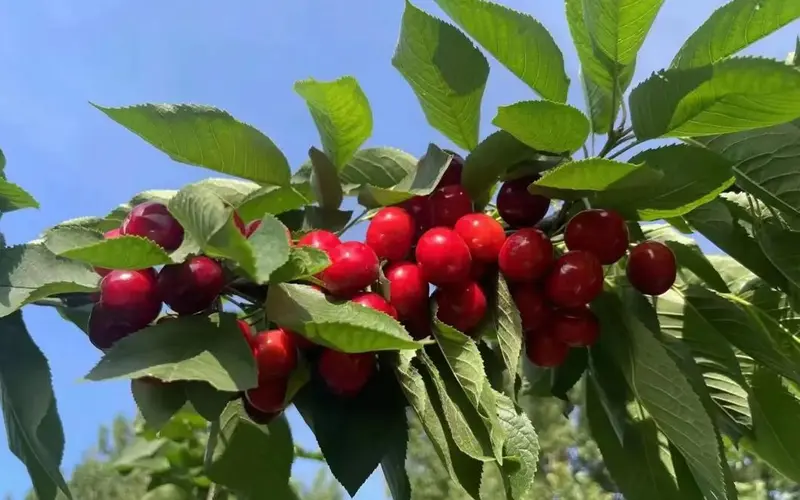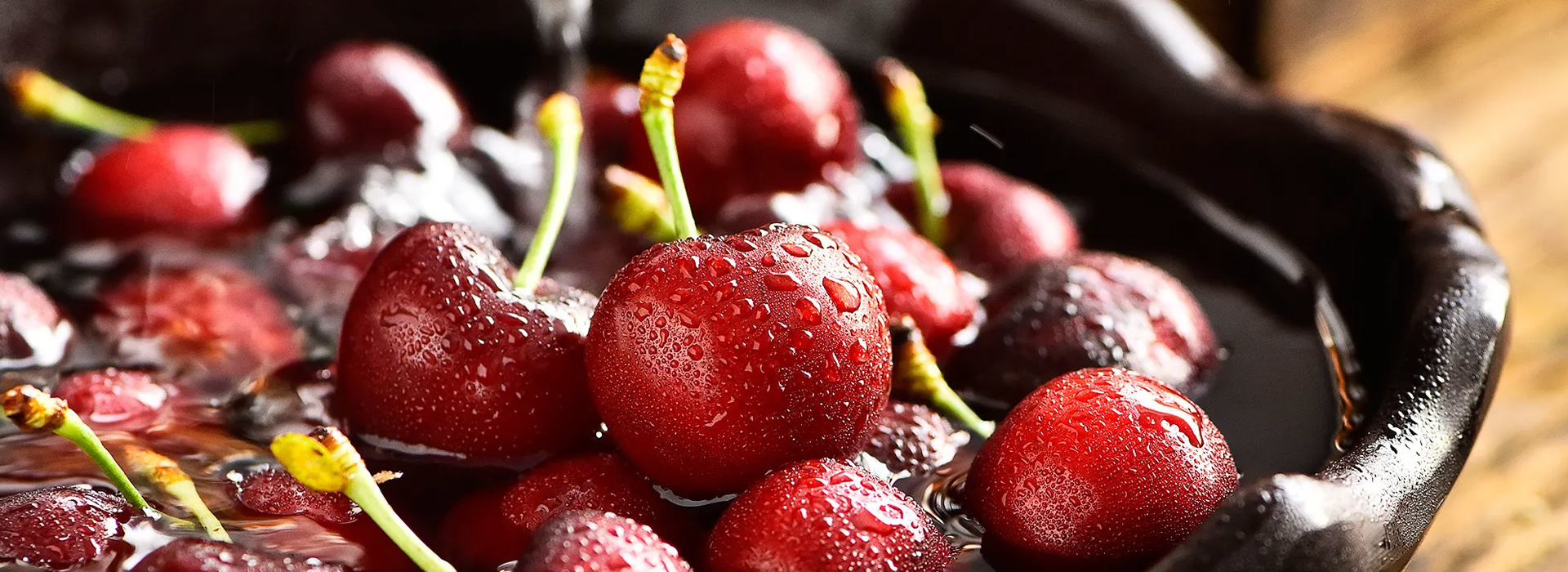What are the different varieties of Yantai cherries?
Release date:
2025-08-21
Yantai boasts a rich variety of large cherry cultivars, with significant differences among them in terms of ripening time, fruit shape, taste, and appearance. These varieties can be categorized based on their maturity cycles—early, mid-, and late-ripening—as well as their core characteristics, such as flavor and intended use. Notably, several varieties have become market favorites due to their exceptional quality. Below are the main types of Yantai large cherries along with their distinctive features:

Yantai boasts a rich variety of large cherry cultivars, with significant differences among them in terms of ripening time, fruit shape, taste, and appearance. These varieties can be categorized based on their maturity cycles—early, mid-, and late-ripening—as well as their core characteristics, such as flavor and intended use. Notably, several varieties have become market favorites due to their exceptional quality. Below are the main types of Yantai large cherries along with their distinctive features:
I. Classified by Maturity Cycle (the core classification method, tailored to different listing requirements)
Yantai's large cherries ripen from early May through mid-to-late June, and are categorized into three types—early, mid-, and late-maturing—based on their ripening schedule. This diverse range of varieties ensures a continuous supply to the market throughout the entire cherry season.
1. Early-maturing varieties (mature from early May to mid-May, capturing the "first harvest fruit" market)
The core advantage of early-maturing varieties is their "early market availability and superior freshness." Although their sweetness is slightly lower compared to mid- to late-maturing varieties, they are highly favored by consumers for their "trendy appeal." Representative varieties include:
Red light
Appearance: The fruit is kidney-shaped, medium in size (with individual fruits weighing approximately 9–12 grams), featuring deep red skin that turns purplish-red when fully ripe. The fruit stems are short and sturdy, with exceptional toughness, making them resistant to detachment.
Texture: The flesh is tender, thick, and juicy, with a sweet flavor that carries a slight tang (the acidity is mildly noticeable). It boasts a fresh, vibrant taste, features small seeds, and has a high edible yield—approximately 92%.
Feature: One of the earliest-maturing varieties among Yantai cherries, it’s also the most widely cultivated variety in the early season. Ideal for fresh consumption, though its slightly soft flesh results in moderate storage and transport durability.
Early-Maturing Fruit
Appearance: The fruit is round to broadly heart-shaped, with large size (single fruit weighing approximately 10–15 grams—larger than 'Red Lantern' cherries). The skin is purplish-red and glossy, featuring small, sparse lenticels.
Texture: The flesh is relatively firm, with a balanced sweet-and-sour flavor (though the acidity is milder than that of Red Lantern). It’s juicy and plump, and the skin has a slight resilience—there’s no astringency when bitten.
Feature: An early-maturing variety introduced from Ukraine, ripening 2–3 days earlier than the 'Red Light' cultivar. It boasts superior storability and transportability compared to 'Red Light,' making it ideal for e-commerce logistics—and has emerged as a "rising star" among recent early-maturing varieties.
Zhifu Red
Appearance: The fruit is heart-shaped, medium in size (with individual fruits weighing approximately 8–10 grams), featuring bright red skin that deepens to a rich crimson upon ripening. The fruit stems are slender and long, allowing the fruits to remain on the tree for an extended period.
Texture: The flesh is tender and delicate, with a perfectly balanced sweet-and-sour flavor and a subtle fruity aroma. The pit is small, and the flesh has low adhesion to the pit (semi-freestone).
Feature: A locally traditional early-maturing variety from Yantai, it exhibits strong adaptability and excellent disease resistance, making it ideal for fresh consumption in the region. Although its slightly smaller fruit size has led to a gradual shift in market share toward the larger "Early Big Fruit" variety, its exceptional taste continues to win over loyal customers.
2. Mid-season variety (matures from mid-May to late May; "outstanding in both quality and yield"—the mainstay)
The mid-season variety is the "golden category" of Yantai cherries, boasting high sweetness, large fruit size, and excellent storage and transportability. It accounts for the highest proportion of production, with representative varieties including:
American Early
Appearance: The fruit is broadly heart-shaped and exceptionally large—each berry weighs approximately 15–20 grams, with some reaching up to 25 grams. At first, the skin is a vibrant red, but as it fully ripens, it turns into a deep black-purple ("black pearl" stage). The fruit surface is smooth and glossy, and the stem is thick and sturdy, making it highly resistant to dropping.
Texture: The flesh is crisp and firm (this variety stands out the most for its "crispness" among Yantai cherries), with exceptionally high sweetness (sugar content around 18–22 Brix, almost entirely free of acidity). It’s richly juicy, releasing a vibrant fruity aroma when bitten. The pit is small and easily separated from the flesh—meaning the fruit segments come away cleanly from the core.
Feature: Introduced from the United States, it is hailed as the "nobility among cherries" and serves as the "signature variety" of Yantai's large cherries. It boasts exceptional storage and transportability—able to stay fresh for 3–5 days at room temperature and up to 10–15 days when refrigerated—making it ideal for fresh consumption or gift packaging. Known for commanding the highest market price, its cultivation area continues to expand year by year.
Pioneer
Appearance: The fruit is heart-shaped, with large size (single fruit weighing approximately 12–18 grams). The skin is purplish-red and boasts a distinct sheen, while the fruit spots are medium in size. The stem is short and thick, and the fruit exhibits excellent fullness.
Texture: The flesh is plump and richly succulent, with a balanced blend of sweet and tangy flavors (sweetness measuring around 16–18 Brix, and a mild acidity). The skin is thick yet firm, offering a satisfying bite without any fibrous texture. The seed is small and easily separates from the flesh.
Features: Introduced from Canada, this variety exhibits strong disease resistance (especially resistant to fruit cracking), delivers consistent yields, and boasts excellent storage and transportability. It’s ideally suited for large-scale cultivation and can be enjoyed fresh or processed into products like cherry jam and cherry wine—making it a premium "fresh-eating and processing dual-purpose" variety.
Summit
Appearance: The fruit is heart-shaped ("pointed tip" feature is distinct and highly recognizable), with large size (single fruit weighing approximately 13–18 grams). Initially, the skin is light red, turning deep red upon ripening. The fruit surface is smooth, and the stem is slender yet remarkably sturdy.
Texture: The flesh is crisp and tender (slightly softer than MeiZao, yet firmer than HongDeng), with high sweetness (around 17–20 Brix) and extremely low acidity. It’s richly juicy and boasts a distinctive "honey-like aroma." The pit is small and easily separates from the flesh.
Features: Introduced from Canada, this mid-season variety has become a "social media sensation" due to its "unique fruit shape and delightfully sweet taste." It exhibits moderate storage and transportability, making it ideal for fresh consumption—especially popular among children and those who prefer milder, less tart flavors.
3. Late-maturing variety (matures from late May to mid-to-late June—key to "extending the cherry season")
The core role of late-maturing varieties is to "fill the gap in the June cherry market," as they have a longer maturation period, allowing for more complete sugar accumulation and delivering the highest sweetness. Representative varieties include:
Lapins
Appearance: The fruit is round to heart-shaped, with large size (single fruit weighing approximately 12–17 grams). The skin is purplish-red and glossy, featuring small fruit spots. The pedicel is of medium length, and the fruit remains on the tree for an extended period (up to 5–7 days after ripening without easily becoming soft or rotting).
Texture: The flesh is crisp and firm, with exceptionally high sweetness (sugar content around 19–23 Brix, almost entirely sweet). It’s richly juicy, and the peel has a slight elasticity. When bitten into, there’s no astringency, and the seed is small and easily separated from the flesh.
Feature: Introduced from Canada, this is a "leading" variety among late-maturing cultivars. It boasts strong self-pollination capability (eliminating the need for companion pollinator trees), exhibits excellent resistance to fruit cracking and disease, and demonstrates outstanding post-harvest durability, making it highly suitable for fresh consumption as well as long-distance transportation. As such, it has become the "mainstay" of the June cherry market.
Stella
Appearance: The fruit is heart-shaped, medium in size (with individual fruits weighing approximately 10–14 grams), featuring deep red skin that turns to a dark reddish hue upon ripening. The surface of the fruit is smooth, and it has a slender, elongated stem. Overall, the fruit exhibits excellent uniformity.
Texture: The flesh is tender and delicate, with a perfect balance of sweet and tart flavors (sweetness around 17–19 Brix, very mild acidity). It’s juicy and boasts a subtle fruity aroma. The pit is small and easily separated from the flesh.
Feature: The world's first self-pollinating sweet cherry variety, highly adaptable and well-suited for cultivation in the hilly regions of Yantai. Thanks to its late ripening and exceptionally sweet flavor, it’s ideal as a "late-season fresh-eating fruit," with consistently strong market demand.
Rainier
Appearance: The fruit is heart-shaped and large in size (with individual fruits weighing approximately 12–16 grams). The base color of the skin is yellow, while the sun-exposed side is evenly adorned with a vibrant red blush ("golden-red hues," giving it an exceptionally attractive appearance). The fruit has small, sparse lenticels, and the stem is thick and sturdy.
Texture: The flesh is crisp and tender, with high sweetness (sugar content around 18–21 Brix), extremely low acidity, a distinctive "milky aroma," abundant juice, and small, easily detached pits.
Features: Introduced from the United States, this variety is nicknamed "the little sun among cherries" due to its "unique appearance and delightfully sweet taste." It exhibits moderate storage and transportability, making it ideal for fresh consumption as well as gift packaging. Though priced higher, it stands out as a "premium option" among late-maturing varieties. However, because of its light-colored skin, extra care should be taken to protect it from direct sunlight—specifically, growers are advised to use protective bags during cultivation to prevent sunburn on the fruit.
Tags:
Previous:
Previous page:
Next page:
Share to



